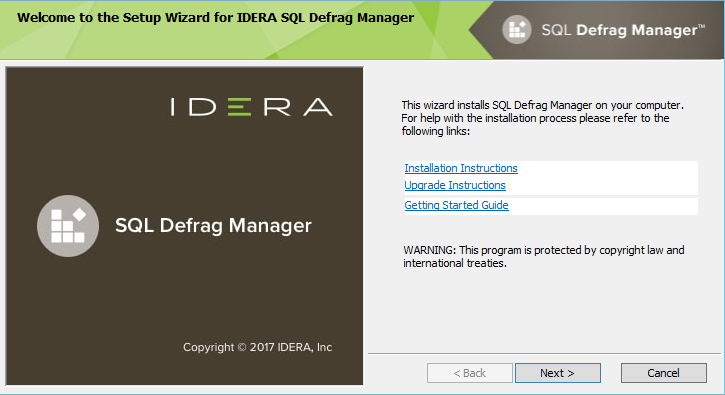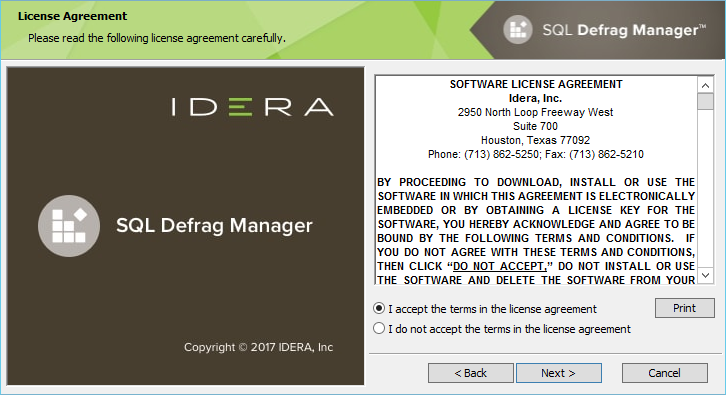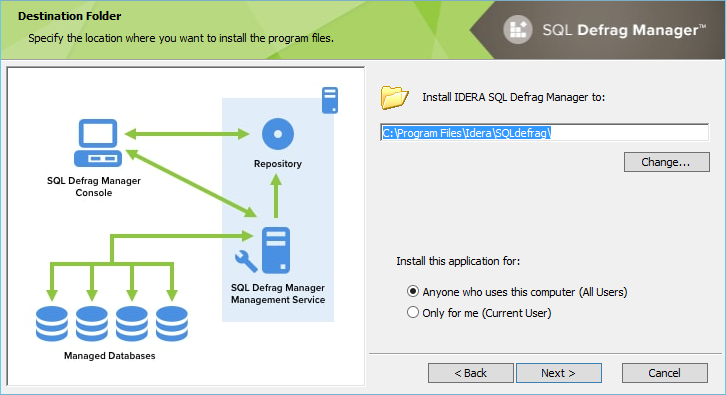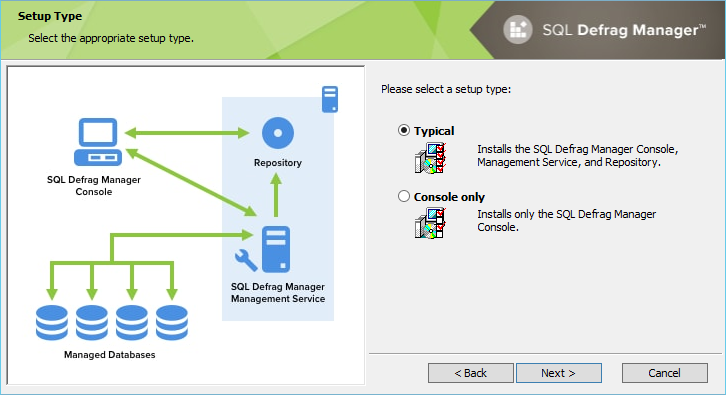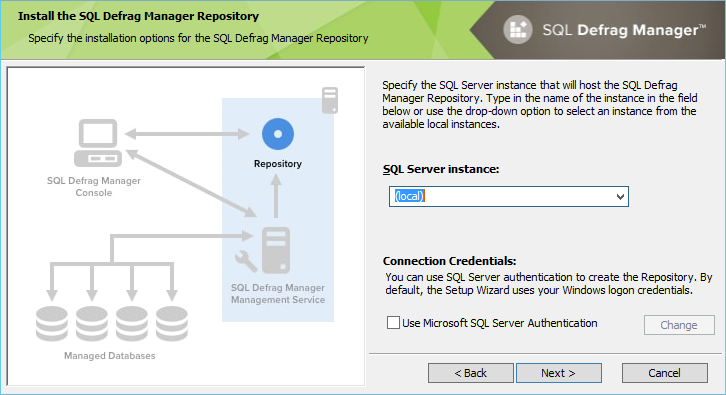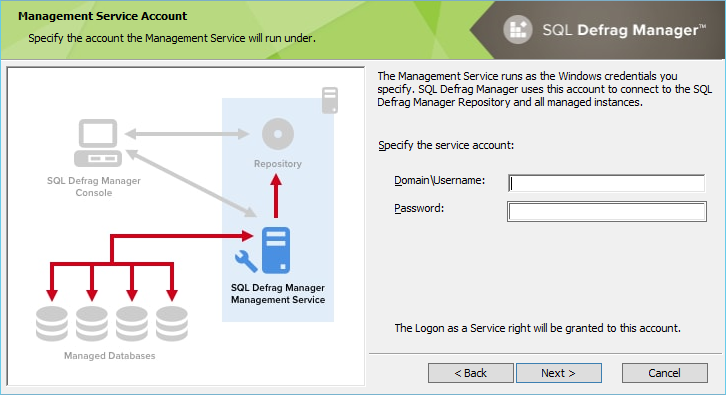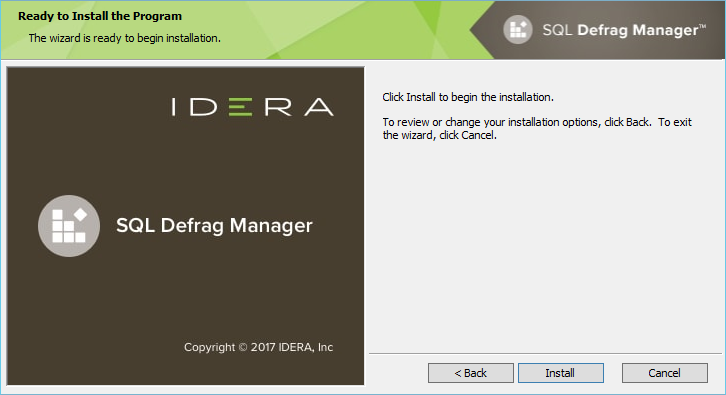This procedure guides you through a typical install of SQL Defrag Manager. This process installs all SQL Defrag Manager components on one system. Use this procedure for first-time installations and evaluation installations.
Before you begin the installation process, ensure you review:
Check Ports Availability
Make sure SQL Defrag Manager service can use port TCP 5280 for listening.
Start the setup program
Before you install IDERA SQL Defrag Manager, be sure to have:
- A system that meets or exceeds the product requirements.
- A local administrator account on the system you are installing the product.
1. On the IDERA SQL Defrag Manager setup window, click Next to continue with the installation.
2. Read the License Agreement. If you agree, click I accept the Terms and Conditions and then click Next.
3. To use the default installation settings, click Next. To use a different path, click Change.
4. Choose a setup type. For your first install, we recommend using the Typical setup. This type ensures that you install and configure all required IDERA SQL Defrag Manager components, so you can immediately begin using the product in your environment.
5. To select an instance for the SQL Defrag Manager Repository, type in the name of the instance or use the drop-down option to select an instance from the available local instances and click Next.
To specify a SQL Server login:
- Select Use Microsoft SQL Server authentication .
- Specify the credentials of a login with sysadmin privileges on that instance, and then click OK .
- Click Next .
6. The SQL Defrag Manager service uses a Windows account to connect to the SQL Defrag Manager Repository. For your first install, we recommend using local system account for the Management Service account. Type in the appropriate credentials in the requested format (Domain\Username and password) and click Next.
7. Click Install to perform the installation, click Back to review your settings. Click Finish when the installation finishes.
